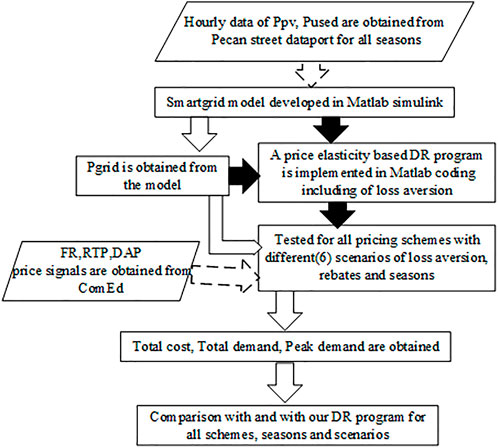
Sustainable Development Goals (SDGs) and the Clean Buildings Audit Incentive Program

According to the National Renewable Energy Laboratory, buildings make up about 40% of energy use in the U.S.
Introduction
In Washington state, public buildings account for a significant portion of total energy consumption. The state Clean Buildings Performance Standard, enacted in 2019, mandates energy performance targets for public buildings, including those owned by state agencies, K-12 schools, higher education institutions, and local governments. Municipalities across the state are concerned with the costs of compliance.
The Clean Buildings Audit Incentive Program
The state Department of Commerce has created the Clean Buildings Audit Incentive Program to address those concerns. Many agencies are stymied in their efforts toward compliance by the high cost of the first step, which is to secure an American Society of Heating Refrigerating & Air-Conditioning Engineers Level 2 energy audit. By providing $20 million in grants to fund these audits for public-owned buildings, Commerce helps remove this barrier.
ASHRAE Level 2 Audits
Each ASHRAE Level 2 audit provides a comprehensive assessment of a building’s energy use and follows a systematic approach to evaluating the actual performance of its relevant systems. The focus of the audit incentive program, Level 2 audits, includes quantitative and qualitative evaluations of current efficiency and areas of improvement for the owner to consider. The evaluations include heating, ventilation, and air-conditioning systems; building envelopes; electrical plug loads; lighting; and domestic hot water.
These energy audits delve deeper than simple walk-through inspections. Qualified professionals, typically engineers with certifications like ASHRAE’s Building Energy Assessment Professional designation, have the expertise to analyze a building’s energy consumption in a comprehensive way. With tools including energy modeling, the auditors identify areas for improvement. The audit report may recommend cost-effective upgrades and include life cycle cost analyses and payback periods for a variety of ways to optimize efficiency and generate significant cost savings.
Program Eligibility and Funding
The audit incentive program is targeted to nonresidential, public-owned buildings of at least 50,000 square feet. The building owners can be state agencies, cities, counties, special districts, K-12 school districts, community colleges, universities, and tribal governments. The application period currently is open until June 2025, with funds available on a first-come, first-served basis. At least 20% of the total fund is earmarked for projects in cities or towns with populations of 5,000 or less.
The program reimburses the building owners for the cost of qualifying audits at rates of up to 50 cents per square foot. There is additional funding for rural communities like Lincoln, Stevens, Adams, and Whitman counties, or the towns of Newport, Ritzville, Dayton, and Pomeroy. Extra funds are also available for buildings greater than 220,000 square feet.
Beyond Regulatory Compliance
While Clean Buildings Performance Standard compliance is a key driver for this program, the benefits can extend beyond meeting regulatory requirements. The audits will look for low- and no-cost options for cost savings, as well as improvements that could involve larger investment. Taking the steps outlined in the audit reports should lead to significant cost savings on utility bills, funds that can be redirected toward other critical needs. In addition to cost savings, the audits analyze the comfort for building occupants by evaluating indoor air and environmental quality, with the result of better spaces for agency staff and clients.
Collaborative Approach to Regulatory Compliance
With the incentive program, Commerce is promoting a collaborative approach to regulatory compliance. By providing financial assistance, Commerce helps remove a significant barrier for public agencies looking to optimize their buildings. Commerce also provides a registry of qualified firms and professionals to conduct the audits, ensuring thorough and reliable assessments. This program empowers public and tribal entities to save taxpayer dollars and use the savings to serve the residents of Washington state more effectively.
Other Programs and Resources
This is just one program among a number that serve to ease the cost burden of upgrading building performance. Some public entities, such as small school districts, may have access to dedicated grant programs that support audits and upgrades. Private enterprises can access low interest loans to upgrade their commercial or multifamily facilities through the Commercial Property Assessed Clean Energy + Resiliency loans available in counties across the state. Knowledgeable professionals may help public and private organizations identify sources of funding to help cover costs.
Conclusion
By leveraging the audit rebate program and other available resources, Washington’s public and tribal agencies are well-positioned to meet the performance requirements. Every public agency that takes advantage of efficiencies leaves more energy available for commercial purposes that will aid the economic stability of the state, an outcome that benefits all Washington residents.
Ro Fonder Reeve is a freelance writer and works in marketing communications at Seattle-based FSi Engineers, which has a Spokane office.
SDGs, Targets, and Indicators
| SDGs | Targets | Indicators |
|---|---|---|
| SDG 7: Affordable and Clean Energy | Target 7.3: Double the global rate of improvement in energy efficiency | Indicator not mentioned in the article |
| SDG 11: Sustainable Cities and Communities | Target 11.6: Reduce the adverse per capita environmental impact of cities | Indicator not mentioned in the article |
| SDG 13: Climate Action | Target 13.2: Integrate climate change measures into national policies, strategies, and planning | Indicator not mentioned in the article |
| SDG 17: Partnerships for the Goals | Target 17.16: Enhance the global partnership for sustainable development | Indicator not mentioned in the article |
1. Which SDGs are addressed or connected to the issues highlighted in the article?
SDG 7: Affordable and Clean Energy
The article discusses the energy consumption of buildings and the need for energy-efficient systems to save money in the long term. This aligns with SDG 7, which aims to ensure access to affordable, reliable, sustainable, and modern energy for all.
SDG 11: Sustainable Cities and Communities
The article mentions the state Clean Buildings Performance Standard, which mandates energy performance targets for public buildings. This relates to SDG 11, which focuses on making cities and human settlements inclusive, safe, resilient, and sustainable.
SDG 13: Climate Action
The article discusses the need to integrate climate change measures into national policies and planning. This aligns with SDG 13, which aims to take urgent action to combat climate change and its impacts.
SDG 17: Partnerships for the Goals
The article mentions the Clean Buildings Audit Incentive Program created by the state Department of Commerce. This program promotes a collaborative approach to regulatory compliance and enhances the global partnership for sustainable development, aligning with SDG 17.
2. What specific targets under those SDGs can be identified based on the article’s content?
Target 7.3: Double the global rate of improvement in energy efficiency
The article highlights the need for energy-efficient systems in buildings to save money in the long term. This aligns with Target 7.3 of SDG 7, which aims to double the global rate of improvement in energy efficiency.
Target 11.6: Reduce the adverse per capita environmental impact of cities
The article discusses the state Clean Buildings Performance Standard, which mandates energy performance targets for public buildings. By improving energy efficiency in buildings, the adverse per capita environmental impact of cities can be reduced, aligning with Target 11.6 of SDG 11.
Target 13.2: Integrate climate change measures into national policies, strategies, and planning
The article emphasizes the need to integrate climate change measures into national policies and planning. This aligns with Target 13.2 of SDG 13, which aims to integrate climate change measures into national policies, strategies, and planning.
Target 17.16: Enhance the global partnership for sustainable development
The article mentions the Clean Buildings Audit Incentive Program created by the state Department of Commerce, which promotes a collaborative approach to regulatory compliance. This aligns with Target 17.16 of SDG 17, which aims to enhance the global partnership for sustainable development.
3. Are there any indicators mentioned or implied in the article that can be used to measure progress towards the identified targets?
No, the article does not mention or imply any specific indicators that can be used to measure progress towards the identified targets.
4. SDGs, Targets, and Indicators
| SDGs | Targets | Indicators |
|---|---|---|
| SDG 7: Affordable and Clean Energy | Target 7.3: Double the global rate of improvement in energy efficiency | Indicator not mentioned in the article |
| SDG 11: Sustainable Cities and Communities | Target 11.6: Reduce the adverse per capita environmental impact of cities | Indicator not mentioned in the article |
| SDG 13: Climate Action | Target 13.2: Integrate climate change measures into national policies, strategies, and planning | Indicator not mentioned in the article |
| SDG 17: Partnerships for the Goals | Target 17.16: Enhance the global partnership for sustainable development | Indicator not mentioned in the article |
Behold! This splendid article springs forth from the wellspring of knowledge, shaped by a wondrous proprietary AI technology that delved into a vast ocean of data, illuminating the path towards the Sustainable Development Goals. Remember that all rights are reserved by SDG Investors LLC, empowering us to champion progress together.
Source: spokanejournal.com

Join us, as fellow seekers of change, on a transformative journey at https://sdgtalks.ai/welcome, where you can become a member and actively contribute to shaping a brighter future.






